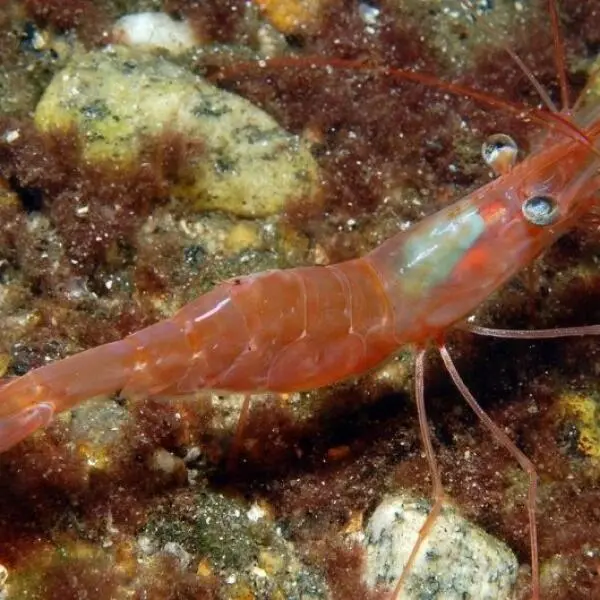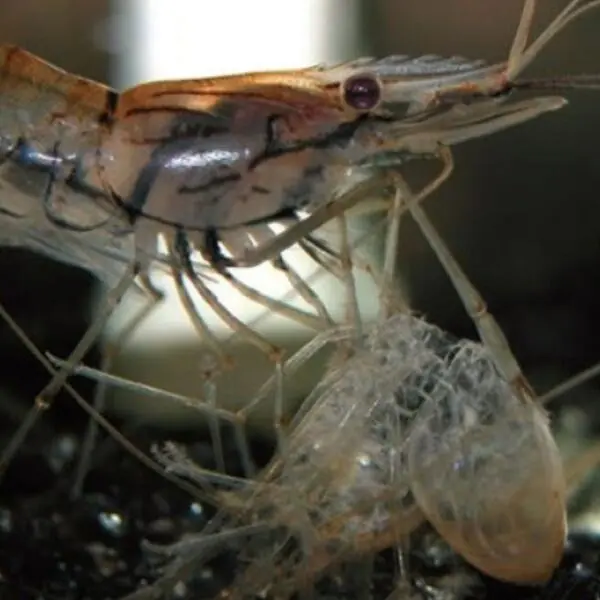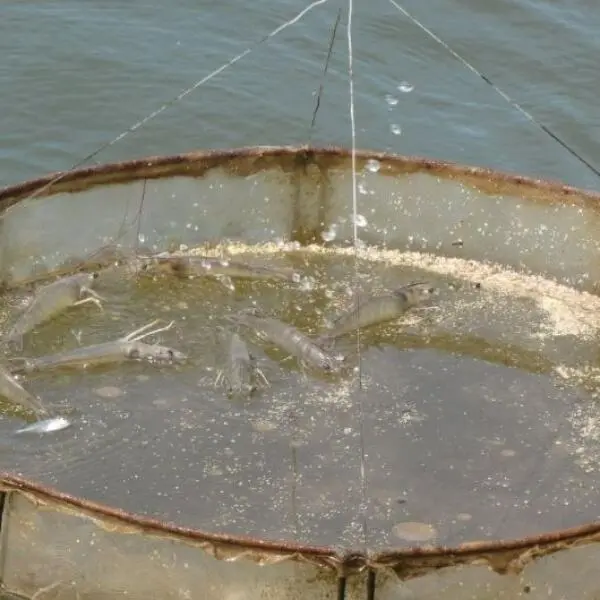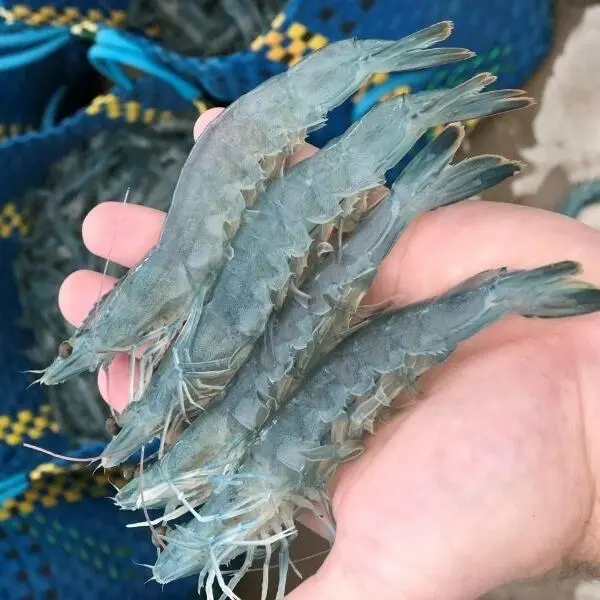
The shrimp farming industry in Vietnam has emerged as a cornerstone of the nation's aquaculture sector. With ambitious government plans targeting $10 billion in shrimp exports by 2025, Vietnam aims to solidify its position as a global leader in seafood production. Shrimp farms play a pivotal role in this growth, offering diverse farming methods and navigating environmental, economic, and sustainability challenges.
Introduction to Shrimp Farming in Vietnam
Shrimp farming has emerged as a critical pillar of Vietnam's agricultural landscape, transforming coastal economies and positioning the country as a global leader in sustainable aquaculture. The journey of Vietnam's shrimp industry is a testament to agricultural innovation, economic resilience, and environmental adaptation. With ambitious targets of reaching $10 billion in shrimp exports by 2025, the sector represents a dynamic intersection of economic opportunity, technological innovation, and environmental stewardship.
The strategic importance of shrimp farming extends beyond mere economic metrics. It has become a critical livelihood strategy for thousands of coastal communities, particularly in regions experiencing significant climate-induced agricultural transformations. Many traditional rice farmers have pivoted to shrimp farming as rising salinity levels render their previous agricultural practices unsustainable.

Shrimp Farming in Vietnam
Understanding Shrimp Farming Systems: A Detailed Exploration
Shrimp farming is categorized into three main systems: extensive, semi-intensive, and intensive, each with distinct characteristics, advantages, and challenges.
1. Extensive Shrimp Farming: Traditional Approach
Extensive shrimp farming represents the most traditional method of aquaculture, deeply rooted in Vietnam's coastal agricultural heritage. This system is characterized by a harmonious, albeit minimally managed, interaction between natural ecosystems and aquaculture practices.
The geographical landscape of extensive shrimp farms is typically defined by strategic locations in tidal rivers, mangrove forests, and coastal areas. These environments provide a natural breeding ground where shrimp populations develop with minimal human intervention. The fundamental principle of extensive farming relies on the natural water exchange mechanisms of tidal systems, allowing wild shrimp seed to enter ponds organically.
Economic viability of this approach stems from its low-cost operational model. Farmers invest minimally in infrastructure and management, allowing for a cost-effective production method. However, this approach comes with significant limitations in productivity, as yields are entirely dependent on natural resource availability and ecological conditions.
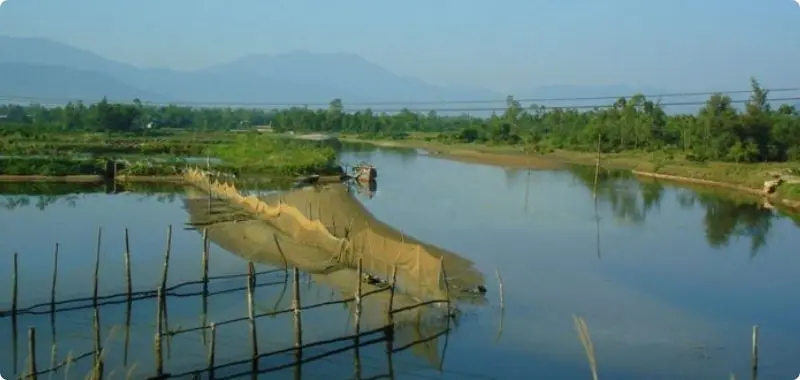
Extensive Shrimp Farming
2. Semi-Intensive Shrimp Farming: Bridging Tradition and Technology
Semi-intensive shrimp farming emerges as an innovative compromise between traditional practices and modern aquaculture technologies. This approach represents a nuanced evolution in shrimp cultivation methodologies, addressing both productivity concerns and ecological constraints.
The core distinction of semi-intensive systems lies in their balanced approach to shrimp cultivation. Farmers manually introduce juvenile shrimp at a moderate stocking density, replacing the completely natural propagation of extensive systems. Water management becomes more sophisticated, with pumps and aerators substituting natural tidal flows, providing greater control over the aquatic environment.
Nutritional strategies in semi-intensive farming are particularly noteworthy. Farmers supplement natural food sources with specialized shrimp feed, agricultural by-products, and fertilizers designed to promote algae growth. This nutritional enhancement directly contributes to improved productivity and biomass development.
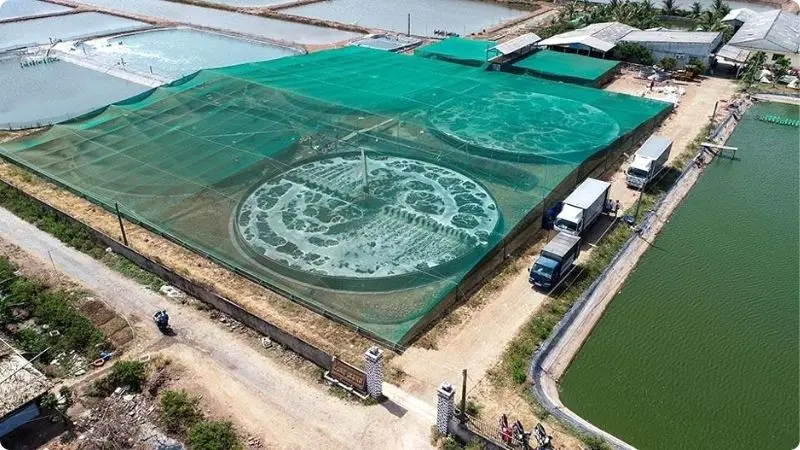
Semi-Intensive Shrimp Farming
3. Intensive Shrimp Farming: High-Tech Aquaculture
Intensive shrimp farming represents the pinnacle of technological intervention in aquaculture, demanding substantial financial and technical investments. This system is characterized by high-density cultivation strategies, precision management, and advanced technological monitoring.
The hallmark of intensive shrimp farming is its ability to maximize production within limited spatial parameters. Hatchery-bred shrimp are cultivated in compact pond environments, with stocking densities significantly higher than traditional methods. Artificial feeds, meticulously formulated to optimize growth rates and nutritional profiles, replace natural feeding mechanisms.
Continuous monitoring becomes paramount in intensive systems. Sophisticated water quality management protocols, real-time waste removal strategies, and comprehensive health monitoring systems are essential to mitigate the inherent risks of high-density cultivation. The potential for disease outbreaks increases proportionally with population density, necessitating proactive and technologically advanced management approaches.
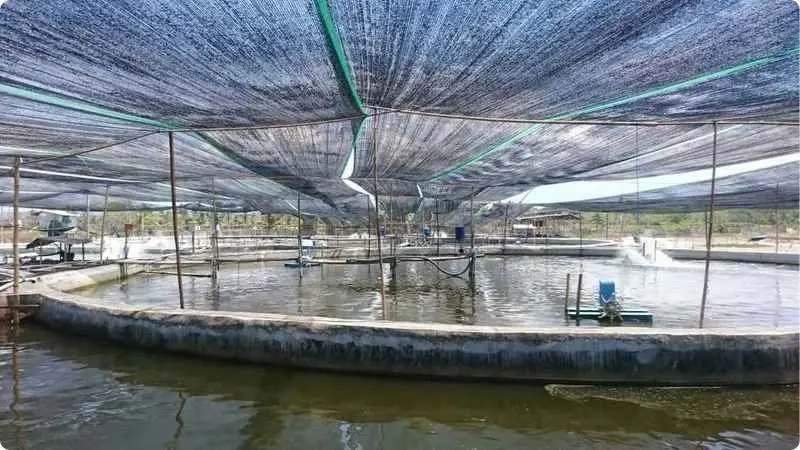
Intensive Shrimp Farming
Environmental Problems Faced by the Shrimp Farming Industry
The shrimp farm industry confronts a complex matrix of environmental challenges that demand holistic and innovative solutions. One of the most significant ecological impacts has been the extensive destruction of mangrove ecosystems. Alarmingly, more than 50% of Vietnam's mangrove forests have been converted to shrimp farming, compromising critical coastal defense mechanisms and biodiversity habitats.
Disease management represents another crucial environmental challenge. The transition to high-density cultivation systems inherently increases the risk of rapid disease transmission. Intensive shrimp farming's concentrated population models create environments where pathogens can proliferate rapidly, necessitating comprehensive health management strategies.
Chemical contamination emerges as a critical environmental concern. The widespread use of antibiotics and pesticides in shrimp farming has led to significant water source contamination. These chemical interventions not only disrupt local ecological balances but also contribute to broader environmental challenges like antibiotic resistance.
Sustainable Shrimp Farming: Innovations and Solutions
To ensure sustainable growth, Vietnam must adopt strategies that mitigate the environmental footprint of shrimp farming.
Technological Interventions
Emerging technologies are revolutionizing sustainable shrimp farm practices:
- IoT Integration: Implementing smart monitoring systems
- Artificial Intelligence: Predictive analytics for disease prevention
- Resource Optimization: Efficient water and feed management
- Traceability Enhancement: Implementing comprehensive tracking mechanisms
The convergence of digital technologies and aquaculture presents unprecedented opportunities for sustainable development. Internet of Things (IoT) devices can now monitor water quality in real-time, detecting potential issues before they become critical. Artificial intelligence algorithms can predict disease outbreaks with remarkable accuracy, allowing for proactive management strategies.
These technological interventions represent more than just efficiency improvements. They are fundamental reimaginings of how shrimp farming can be conducted, prioritizing both economic productivity and environmental sustainability.
Integrated Mangrove-Shrimp Farming
A groundbreaking approach that simultaneously addresses ecological and economic concerns:
- Carbon Emission Reduction
- Coastal Erosion Prevention
- Biodiversity Conservation
Integrated mangrove-shrimp farming offers a holistic solution to the environmental challenges posed by traditional aquaculture methods. By reintegrating mangrove ecosystems into farming practices, this approach creates a symbiotic relationship between agricultural production and environmental preservation.
Global Market Dynamics and Sustainability Standards
As global consumers demand responsibly farmed shrimp, Vietnam faces pressure to improve traceability and adhere to international standards.
Traceability Challenges
The shrimp farm industry faces complex traceability issues:
- Re-export Complexities: Imported raw shrimp processing
- Supply Chain Fragmentation: Middlemen control over 75% of the value chain
The global shrimp market is characterized by intricate supply chains and complex regulatory environments. Vietnam's position as both an importer and exporter of shrimp creates unique challenges in establishing comprehensive traceability.
Certification and Compliance
Key strategies for meeting global sustainability standards:
- Technology-Driven Tracking: IoT devices for comprehensive monitoring
- Certification Programs: Adopting international standards like ASC Shrimp Standard
International certification programs provide a critical framework for sustainable shrimp production. The Aquaculture Stewardship Council (ASC) Shrimp Standard, for instance, offers a comprehensive set of environmental and social criteria that farmers must meet.
Future Outlook: Sustainable Growth Strategy
Vietnam's shrimp farm industry is positioned for transformative growth through:
- Controlled Intensification
- Sustainable tech investment
- Satisfying Global Market Criteria
The path forward requires a delicate balance between technological innovation, environmental stewardship, and economic pragmatism. Controlled intensification offers a promising approach, allowing for increased productivity without proportional environmental degradation.
Conclusion
The future of shrimp farming lies in harmonizing economic ambitions with ecological preservation. By embracing innovative technologies, sustainable practices, and rigorous standards, Vietnam can emerge as a global leader in responsible aquaculture.
Related Articles
How big can tiger shrimp grow?
Tiger shrimp , including the highly sought-after black tiger shrimp, is a lucrative species in the ...
All About Pink Shrimp: The Fascinating World of Pink Shrimp
Pink shrimp (Farfantepenaeus duorarum) stands as one of the most valuable and fascinating marine ...
What is White Shrimp? A Deep Dive into This Iconic Seafood
White shrimp (Litopenaeus setiferus) stands as one of the most commercially significant seafood ...
What Happens When a Shrimp Molts?
Shrimp molting is a critical process in the life cycle of shrimp, where they shed their old ...
Why Minerals Are Crucial for Shrimp Health
Minerals are indispensable for maintaining the overall health of shrimp. These tiny crustaceans, ...
What Factors Influence Shrimp Growth Rates?
Shrimp cultivation has become an increasingly profitable sector due to rising global demand. ...


